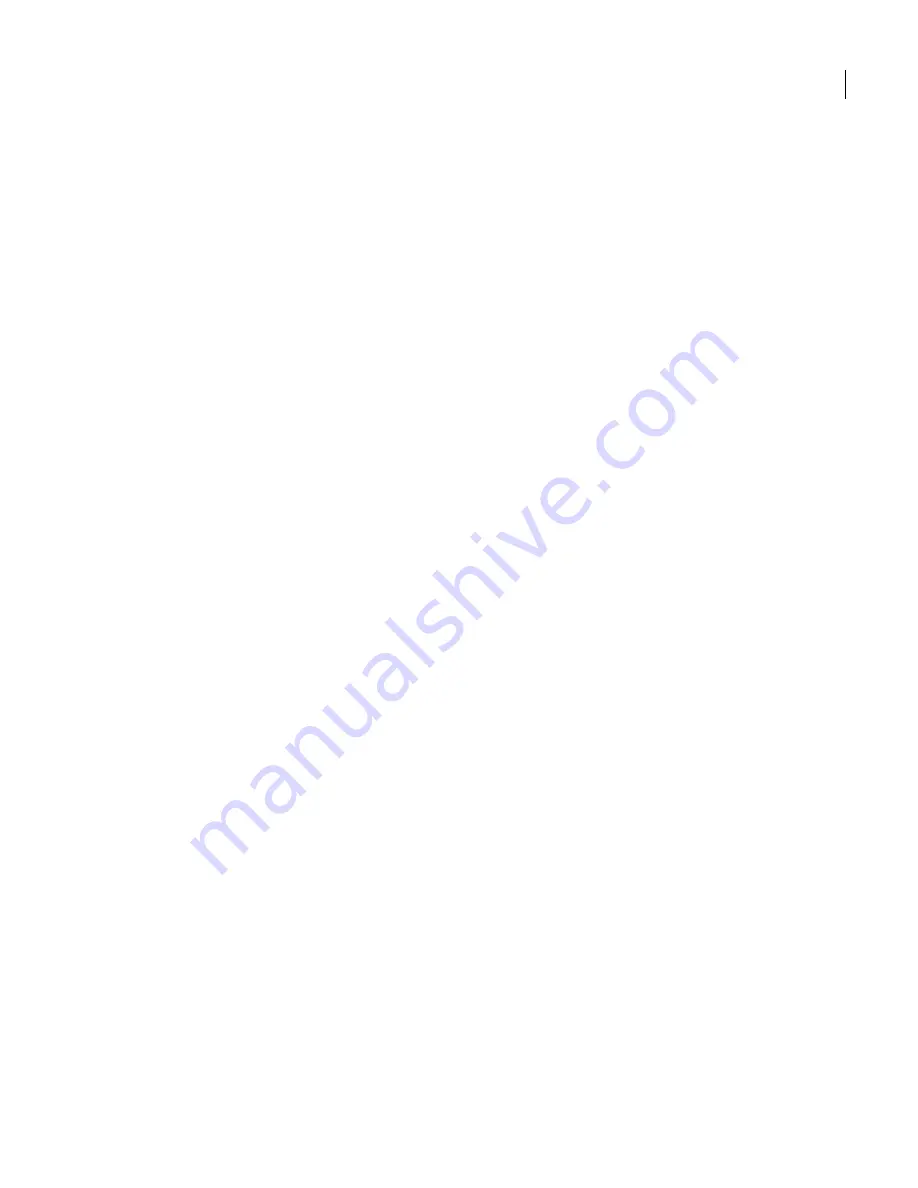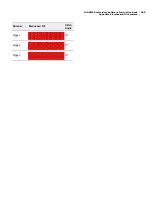
JANOME Embroidery Software Instruction Book
Glossary
294
Underlay, Backing Type, Thread
Type and Garment Orientation. See
also
Push-Pull
.
Stitch type: Three basic stitch
types are available with lockstitch
machines – Run, Satin and Tatami
(Weave). JANOME Embroidery
Software provides many variants of
these.
Stitch spacing: Spacing between
two consecutive needle
penetrations on the same side of a
column. The smaller the value, the
greater the stitch density. For more
open stitching, use larger values.
Stitching defects: Stitching
defects may appear in the form of
gaps between filled areas, fabric
show-through and thread breaks.
These are often caused by incorrect
stitching settings – e.g. setting pull
compensation too small for the
fabric stretchiness.
Stitching sequence: The
embroidery objects in a design
form a stitching sequence. Initially,
objects are stitched in the order in
which they were created. You can
change the position of a selected
object by cutting it, then pasting it
somewhere else in the sequence,
or by using the Resequence
command. You can also
resequence objects by color or with
the Resequence List.
Tatami stitch: Series of run
stitches, commonly used to cover
large, irregular shapes. Stitches
are laid in rows traversing back and
forth across the shape. These can
be parallel or slightly turning.
Different fill patterns can be
created by varying the stitch
length, angle or sequence. Also
known as Weave stitch.
Template: Special files used to
store styles and default property
settings. Use templates when
digitizing frequently-used design
types to save time re-adjusting the
current property settings.
Tension: Tautness of thread
when forming stitches. Top thread
tension, as well as bobbin thread
tension, need to be correctly set.
Proper thread tension is achieved
when about one third of the thread
showing on the underside of the
fabric on a column stitch is bobbin
thread.
Thread: Fine cord or natural or
synthetic material made from two
or more filaments twisted together
and used for stitching. Machine
embroidery threads come in rayon
(high sheen), cotton (duller finish),
polyester (strong and colorfast),
metallics (synthetic core wrapped
with metal foil or thin slivers of
metal foil) and acrylic (sheen
similar to rayon).
Thread chart: Thread charts are
lists of pre-defined thread colors.
They may be based on
commercially available thread
charts, or charts you define
yourself. You can copy colors
between different thread charts to
create your own charts from
existing colors. See also
Color
chart
.
Thread density: Different thread
density systems are used by
different thread manufacturers.
Density A is normal embroidery
thread (density 120/2, or 40).
Density B is thicker, Density C is
finer, and Density D is very fine.
Thread thickness: See
Thread
density
.
Thread type: Embroidery thread
varies in thickness. Types are A, B,
C and D. Stitch density should be
set according to the thread type.
See also
Thread thickness
.
Tie-ins: Tie-in stitches are
inserted at the start of objects to
prevent stitches from unraveling.
They are inserted inside the shape
on the second stitch. You generally
use them when the previous
connector is trimmed.
Tie-offs: Tie-offs are generally
placed before trims to prevent
stitches from unraveling. You can
adjust connector settings to
automatically add tie-offs under
certain conditions, or add them
manually. You can also include trim
functions so machines with
trimmers cut the thread
automatically.
Title bar: The horizontal bar
located at the top of a window and
containing the title of the window.
On many windows, the title bar
also contains the Control menu box
and Maximize and Minimize
buttons.
Toolbar: Toolbars provide quick
and easy access to EasyDesign
commands. Click a toolbar button
to activate a command or, where
applicable, right-click to view and
adjust its settings.
Topping: Material hooped or
placed on top of fabrics that have
definable nap or surface texture,
such as corduroy and terry cloth,
prior to embroidery. The topping
compacts the wale or nap and
holds the stitches above it. It
includes a variety of substances,
such as plastic wrap, water-soluble
plastic ‘foil’ and open-weave fabric
that has been chemically treated to
disintegrate with the application of
heat. Also known as ‘facing’. See
also
Stabilizer
.
Travel on Edge: Trapunto is a
general term for very open fill
stitching, often used as a
background or for filling large
shapes. In EasyDesign, Travel on
Edge effect forces travel runs to
the edges of objects so they do not
show through open or loose
stitching.
Travel run: Travel runs are
typically used to connect segments
of complex shapes. They can also
connect adjacent objects. Because
runs are not trimmed, they may be
visible in the final embroidery. For
this reason, they are less
commonly used as connectors
between objects than jumps. If
objects are adjacent and
connectors will be hidden, they can
be used.
Traveling: You generally check a
design’s stitching sequence by
‘traveling’ through it by stitches,
segments, functions or objects.
Trims functions: If you are using
a machine with an automatic
trimmer, the trim code causes the
thread to be cut after a tie-off. In
the software, trims are represented
by a triangle with a small circle at
the point where stitching starts
again. The trimmed connector
appears as a dotted line. You can
adjust connector settings to
automatically add trims, or add
them yourself.
Trimmers: Devices built into an
embroidery machine to
automatically trim or cut remaining
thread when the design jumps
from one area to another or
performs a color change.
Содержание DigitizerPro
Страница 236: ...234 Part IX Software Feature Table ...
Страница 243: ...241 Part X Appendices Glossary Index ...











































